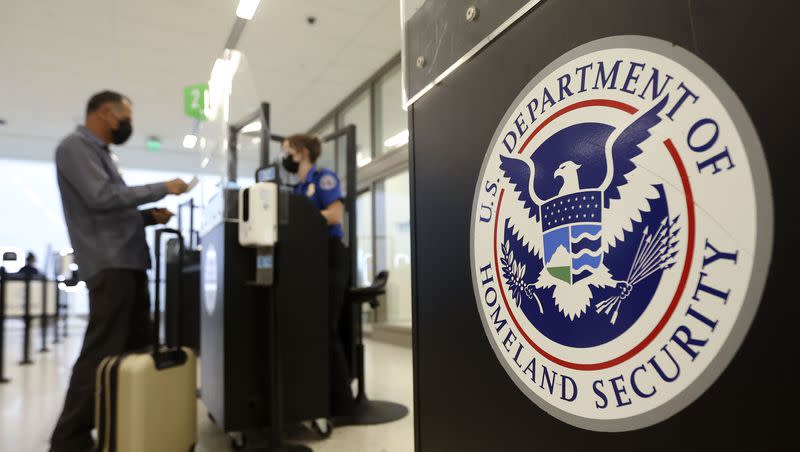4 ways tech can help you breeze through airport security

Airline passengers have new options when it comes to verifying identity at the airport. Depending on the airline and location, some of them could mean less stress and waiting time at the gate.
How can I make my airport security experience easier?
1. Digital IDs
Last week was my first time flying out of Salt Lake City International airport since the Transportation Security Administration announced it would accept digital IDs there. Utah is one of only a handful of states that have state-issued mobile digital IDs accepted by TSA.
I had signed up for my GET Mobile ID in Utah nearly two years ago, but had not yet had the opportunity to use it. Although I asked a few times whether a bank or retail establishment would accept it, the employees always seemed confused and asked for my physical card instead.
Here was my chance.
As a TSA PreCheck member for more than a decade, I have relished accessing a shorter line, keeping liquids and electronics in my bag and leaving my shoes on going through security. As I approached the TSA agent, I showed her my digital ID and she pointed to the QR code scanner at her station. I scanned and she waved me through. Easy peasy.
SLC is the first airport in the country to have second generation credential authentication technology deployed throughout its security checkpoints. As it scans the photo ID, a camera captures a real-time photo of the passenger at the same time. Software compares that photo with the one on the ID to confirm a match. The photos are not stored and travelers can always opt out. An earlier version of these credential authentication machines installed last year is what eliminated the need for passengers to show boarding passes at security.
But I hit the real jackpot when it comes to testing out new airport security features on my return flight. Hartsfield-Jackson Atlanta International Airport is the only one in the country where several new features are at play.
2. Facial recognition verification
When I received my Delta boarding pass on my phone, it asked me if I would like to opt into facial recognition verification. Atlanta and Detroit are the only airports offering biometric identification at this time. I said yes, yet was unsure of the exact benefit. My digital boarding pass already noted that I was a TSA PreCheck member and now also had a demarcation that I had a digital ID as well.
When I arrived at ATL, the regular security lines snaked around to my left. The PreCheck lane to my right was much shorter, as usual, and I headed that direction. But then I clocked a Delta employee standing near a Digital ID Checkpoint Entry sign. He told me I could go in either lane, but when I asked which was shorter, he pointed to the Digital ID lane. There wasn’t one person in the line. I walked straight to the TSA agent.
Then, since I had opted in to facial recognition, I didn’t even have to pull out my phone at all. The camera scanned my face and I was in. Delta explains that those images are encrypted, stripped of biographic information and sent to U.S. Customs and Border Protection’s facial biometric matching service to verify identities. The airline also says it does not save or store any biometric data, nor does it plan to.
This was the quickest I’ve ever made my way through an airport security checkpoint — and at the busiest airport in the world, according to Fortune.
3. Computed tomography scanners
The TSA is also moving toward a goal to allow passengers to keep laptops and liquids inside of people’s carry-on bags. This is already the case for PreCheck passengers, but could soon be a reality for all. The TSA will spend more than a billion dollars for computed tomography scanners for luggage that is similar to the CT technology used in the medical field.
They create 3D images the officer can rotate 360 degrees to help them analyze contents. While these scanners should be in use at most checkpoints by this summer, the TSA told Condé Nast Traveler that we are still “years away from announcing a change to the current liquids rule.”
4. Reserve a time to go through security
Another way to speed up airport security is the free option at some airports to reserve a time. You’ve likely seen the Clear lanes that, for a price, allow passengers to use facial identification to speed through. But that same company also offers something called Reserve powered by Clear.
Eleven North American airports — including Phoenix, LAX, JFK, Orlando, as well as some in Europe — allow travelers to reserve a time for up to 10 people. They’ll receive a QR code to scan at the airport to head down the fast lane and each reservation has a 20-minute window for arrival. Move over, Disneyland.
Some of these features take planning ahead to make sure all goes smoothly once you reach the checkpoint. But all of these advancements in the efficiency and options at the airport means getting through security is less of a headache.

